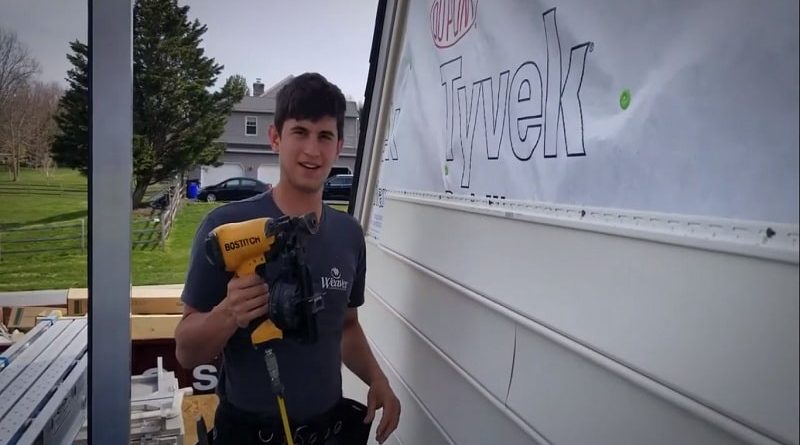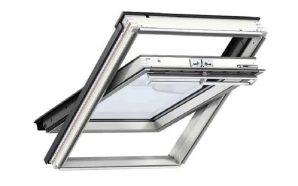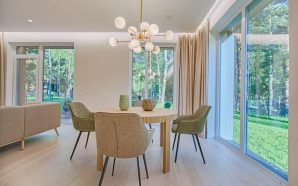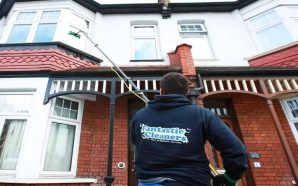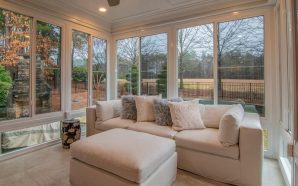When it comes to the exterior of your home, the type of siding you choose is of the utmost importance. Not just because it is an integral element of the wall assembly, but it’s the first thing people see when they visit your house.
However, it is important to understand that installing new siding or even replacing it can cost you an arm and a leg. From choosing the right type of material to buying a reliable siding nailer, you have to ensure that everything is in line with your budget and long-term maintenance needs.
But since the durability, look, and budget of your siding is dependent upon the siding material, we’re going to shed light on some of the best material options available so far.
But before that, first, have a quick look at some of the signs that can help you identify the siding in your home that needs repair or replacement.
How to Identify the Siding in Your Home Needs a Replacement?
One of the biggest challenges for any homeowner is to spot the signs that your siding is failing and you need to replace it as soon as possible. If you observe any of the below-listed symptoms, then you should call a siding specialist to have them assess the damage and provide you with the best possible solution.
Mold
Mold or moisture damage is the first indication that your siding needs a replacement. It could either be in the form of siding discoloration or bubbles in the siding.
You may need to monitor the exterior of your home from time to time if you live somewhere with heavy rains or storms.
Melted Siding
While vinyl siding is built to last, there are many things that can cause damage to it in the long run.
For instance, your siding can melt when exposed to prolonged heat or sunlight. If you observe warping or bubbles in your siding, it’s a clear sign that it needs replacement.
Insects
Pests and insects can find their way in through the tiniest of holes and cavities. Carefully monitor the creases for symptoms of boreholes. Make sure you seek immediate professional help if you see insect infestation in your siding, as it can cause a massive amount of damage to your home if left untreated for a long time.
Warping
Bubbling or warping is another clear indication that water has found its way into the siding. If you spot bubbling or warping in your siding, it’s important to get it checked from a pro as soon as possible to prevent further damage.
Once you successfully identify the damage, the next step would be to find a solution. You can either fix your siding or replace it from scratch if the damage is beyond repair.
Things to Consider Before Choosing the Siding for your Home
Make sure you pay attention to these factors before you choose the right type of material for your siding needs.
Ease of Installation
The type of siding you choose must be easy to install. Especially if your budget is limited and you’re planning to handle the replacement on your own, it’s important to choose the process that requires minimal tools. Also, the technique must be within your skillset.
Water Resistance
There are different types of siding available on the market (we’re going to talk about them in the next section). The ones that come with water-resistant capability are more durable and long-lasting.
Versatility
The siding you choose must be versatile enough to fulfill the varied needs of your remodeling project. Make sure you carefully assess the exterior of your house and identify which specific type of siding could be the best possible solution.
Aesthetics
The siding you choose for your home’s exterior will be the first thing you and your visitors will see. So yes, it should be beautiful enough to grab attention.
Energy Efficiency
This is one of the most important yet often neglected aspects. When you plan to replace your siding or install a new one, don’t forget to check the R-Value rating. The R-Value rating will help you understand the type of insulation you need to install underneath the siding.
Durability
The siding for your home is a long-term and pricey investment. This is why it’s important that it should be able to withstand different weather conditions and temperature shifts.
Types of Siding
There are different siding options available on the market, with each one having its own pros and cons. Before you jump onto the next step, make sure you’ve already read and understood the above two headings.
Vinyl Siding
Vinyl siding is one of the most durable and least expensive siding options available to date.
Because of its versatility and resistance, it is one of the most popular siding materials used worldwide. Vinyl is impervious to moisture and pests. Also, this material is invulnerable to expanding, warping, and rotting. Unlike other options, vinyl siding is low-maintenance and easy to install.
In terms of versatility, vinyl is available in a wide range of color and design options. Both horizontal and vertical panels are available. The ends of standard panels should be overlapped to create noticeable seams.
As far as price is concerned, vinyl siding features a low to moderate price range. All in all, if you have a low budget and you want to invest in something long-lasting and low-maintenance, then vinyl siding can be your safest bid.
Fiber Siding
Fiber cement siding is a relatively new material. However, it is readily available on the market. It is a mixture of cement and cellulose and can elevate the entire look of your house’s exterior. At a glance, it gives an impression of real wood. This material is both pest-resistant and fire-resistant. But, if you live in an area with harsh weather conditions, then you must avoid installing this type of siding in your home. Fiber siding generally comes with a 50-years warranty. It is extremely durable and resists expansion and contraction.
In terms of design, fiber siding is available in a wide variety of finishes. You can mold the basic material to mimic shingles or masonry.
Fiber cement siding is available in a moderate to high range pricing bracket. You can choose fiber siding if you have a moderate budget, and you want a customizable and highly durable siding option for your house.
Plastic Siding
Plastic siding is a new market entrant. It can resemble extravagant roofing material and is absolutely low maintenance.
While this type is durable and less prone to damage and frequent repairs, it is expensive than other available alternatives.
You can choose plastic siding if you want to make a long-term siding investment with low-maintenance needs. Also, it would be a perfect option if the budget isn’t a big deal for you.
Wood Siding
Despite the fact that wood siding looks classy, it is prone to rotting, warping, and swelling. Also, it can be damaged by direct sun exposure. Insects and pests can also easily find their way through holes.
Wood siding isn’t a good option for you if you live somewhere with extreme climatic conditions. Wood siding requires high maintenance.
In terms of design, wood siding is naturally beautiful and flaunts classic style. Both horizontal and vertical panels are available. Wood siding is the oldest type of siding and can be painted or stained for a customized look. Wood siding can range anywhere between high to very high price range.
Aluminum Siding
Aluminum siding isn’t a recommended option for the Midwest. The material is prone to denting. Aluminum siding is waterproof and offers impeccable insulation from extrinsic elements. Also, it’s low maintenance and not very expensive.
Aluminum siding comes in both horizontal and vertical panels and shingles. You can have your siding painted in a wide range of colors.
Brick and Brick Veneer Siding
Brick and Brick and veneer siding offer better sustainable value over other products. This type of material can withstand harsh weather conditions.
Brick and Brick and Veneer siding are available in a wide range of colors and texture options.
This type of siding perfectly blends with different architectures, including English, colonial, Tudor.
The only disadvantage is that the installation of Brick and Brick Veneer siding can be very costly. Especially if your home wasn’t designed for brick siding, the labor costs could be too high.
Stone
Stone siding requires low-moderate maintenance and is impervious to the climatic shifts.
Stone adds a classic accent to any home’s exterior. The cost of installation could be extremely high. The only issue is the stone could be difficult to install in certain homes, and that could add to the overall project and labor cost.
Key Takeaways
With all these siding options available, choosing the right siding can be a difficult task. But, it doesn’t need to be that tough, right?
Fortunately, there are many home remodeling companies that can help you out with the selection process. We’ve tried to unveil the maximum siding options (in terms of design, durability, aesthetics, and price) so that you can make the right decision.
All of these options come with their own advantages and disadvantages. Make sure you do some research beforehand and choose a product that best fits your individual needs. Also, make sure to have an accurate budget in hand so you won’t have difficulty finding your desired product.




